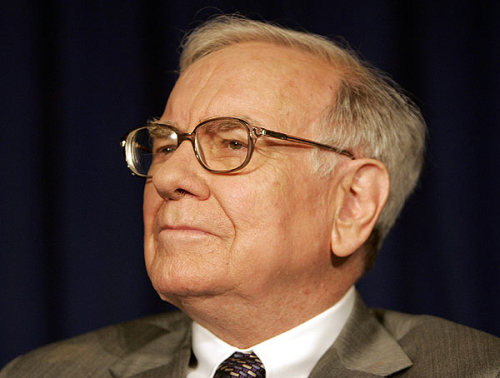About
The Kindergarten
Josh is the CEO of
Ritholtz Wealth Management. He writes about the tomfoolery and childish
behavior occurring daily at the Kindergarten on the corner of Wall and
Broad. Pull up a nap mat and have a read.
+ FOLLOW THIS TUMBLR

We’ve seen stuff like this before. There is a worthwhile lesson in considering how a pair of history’s greatest investors have dealt with this kind of thing in the past.
On the surface, Warren Buffett and David Tepper don’t have a lot in common. One runs a diversified conglomerate and reinvests the insurance premiums into both long-term common stock positions and outright acquisitions of great companies. The other manages a hedge fund and aggressively trades in the markets each day.
But they have something in common that is worth considering today: Both Warren Buffett and David Tepper know that volatility is where returns come from and the losses of today set up the outsized gains of tomorrow. They’ve “lost” some money on the way to earning tons of it.
In the summer of 1998, there was a currency crisis that originated in the far east and eventually wound its way around the globe, culminating in the devaluation of the ruble and the blow-up / bailout of the first systemically risky hedge fund in history, Long Term Capital. Both Buffett and Tepper took quite a beating during this so-called “Asian Contagion” event.
As Nick Murray explains, Warren Buffett was down quite a bit that summer.
$6,200,000,000Berkshire Hathaway’s “A” shares had dropped in price from roughly $80,000 per share in June to $59,000 by the end of September. These same exact shares just hit a high of $229,000 this year. Buffett knew that while the price may have been changing for his company’s shares, the value that his companies were creating would not be permanently impaired. This allowed him to wait out the ’98 episode rather than reacting to it.
A very large sum of money, wouldn’t you say? Now what, you ask, does it represent?
It is roughly how much Warren Buffett’s personal shareholdings in his Berkshire Hathaway, Inc. declined in value between July 17 and August 31, 1998. And now for the six billion dollar question. During those forty-five days, how much money did Warren Buffett lose in the stock market?
The answer is, of course, that he didn’t lose anything. Why? That’s simple: he didn’t sell.
Meanwhile, 1200 miles away from Omaha, David Tepper’s New York-based Appaloosa hedge fund was struggling with the same market environment. He had all the wrong trades on and it went against him severely. As Tepper himself related to us at the SALT Conference, it was a painful episode, despite how quickly things turned around for him:
Tepper tells us his fund has been down 20 percent or more on three different occasions. This includes the episode in 1998, where he was blown out because of the Asian Contagion and subsequent Russian currency devaluation. Tepper was heavily exposed to emerging markets and Russia, the combination crushed the fund. But then he made it all the way back to Appaloosa’s high water mark within 6 months.The lesson of 1998 for Tepper was that the massive market drawdowns are the biggest opportunities if you can stick it out. He (and his investors) learned to use these episodes to get even more aggressive. It was a tactic he would famously employ ten years later, during the even more difficult post-Lehman meltdown with Appaloosa down more than 20% from its high watermark.
“We did it two more times – people started flooding us with money whenever we were down big because counter-intuitively they knew it was good timing to get in.”
A million dollars invested with David Tepper in the mid-1990’s would be worth more than $250 million today. These gains would not have come easily for the LP, however. As Tepper once described his strategy, “We’re consistently inconsistent. It’s one of the cornerstones of our success.”
There is an equity risk premium in the markets. Over the long term, stock investors can earn average annual returns that are close to 5% above what they’d be able to earn at the risk-free rate. That’s a huge number when compounded over decades.
But it must be earned the hard way – battling through the worst the markets can throw at us. And, as both Buffett and Tepper can attest, its when stocks are treating us the worst that this premium is right around the corner.
Sources:
The First Casualty of a Bear Market (TRB)
The Apotheosis of David Tepper (TRB)
Image by Javier
No comments:
Post a Comment